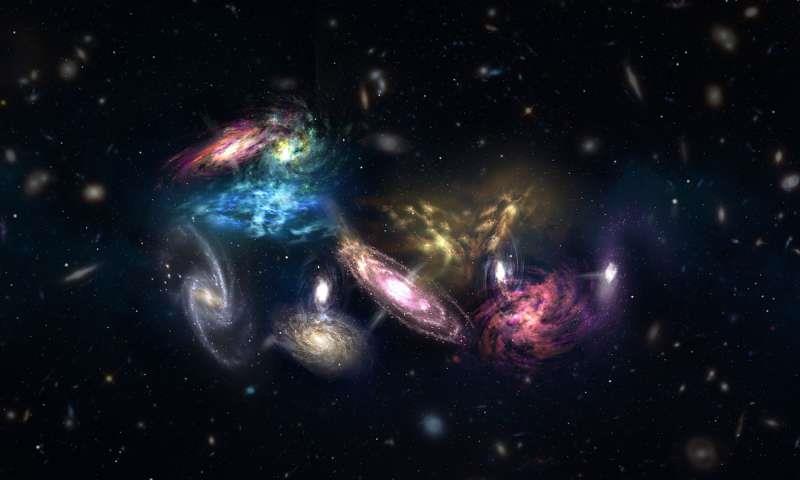LOS ANGELES, April 25 (Xinhua) -- Using the Atacama Large Millimeter/Submillimeter Array (ALMA), an international team of astronomers has uncovered a startlingly dense concentration of 14 galaxies that are poised to merge, forging a galaxy cluster in the early universe.
According to the new study, published Wednesday in the journal Nature, this ancient mega-merger is destined to evolve into one of the most massive structures in the known universe: a cluster of galaxies, gravitationally bound by dark matter and swimming in a sea of hot, ionized gas.
This tightly bound galactic smashup, known as a protocluster, designated as SPT2349-56, is located approximately 12.4 billion light years away, meaning its light started traveling to us when the universe was only 1.4 billion years old, or about a tenth of its present age.
"How this assembly of galaxies got so big, so fast is a bit of a mystery, it wasn't built up gradually over billions of years, as astronomers might expect," Tim Miller, co-author of the paper and a doctoral candidate at Yale University, was quoted as saying in a news release.
"This discovery provides an incredible opportunity to study how galaxy clusters and their massive galaxies came together in these extreme environments."
This cluster's extreme distance and clearly defined components offer astronomers an unprecedented opportunity to study some of the first steps of cluster formation less than 1.5 billion years after the Big Bang, according to the study.
ALMA is an array of radio telescopes in the Atacama desert of northern Chile.
